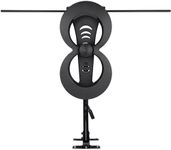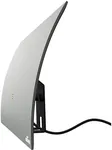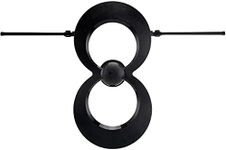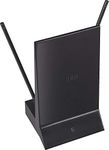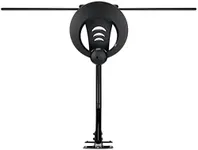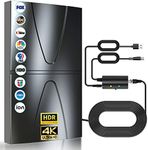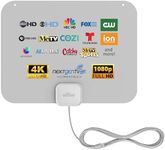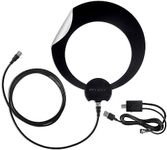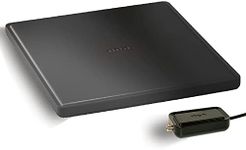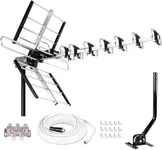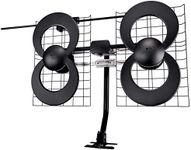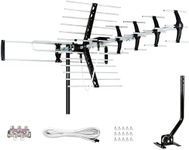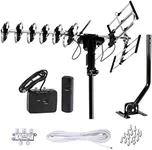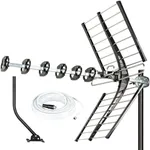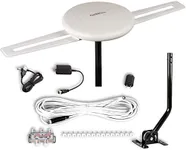Buying Guide for the Best Indoor Antenna For Tv
Choosing the right indoor antenna for your TV can significantly enhance your viewing experience by providing access to a variety of channels without the need for a cable subscription. The key to finding the best fit for you is understanding the different specifications and how they align with your specific needs and environment. Here are the main specs to consider when selecting an indoor TV antenna.RangeThe range of an indoor antenna indicates how far it can receive signals from broadcast towers. This is important because it determines the number of channels you can access. Antennas with a range of up to 25 miles are suitable for urban areas where broadcast towers are nearby. For suburban areas, a range of 25-50 miles is ideal, while rural areas may require antennas with a range of 50 miles or more. To pick the right one, consider your distance from the nearest broadcast towers and choose an antenna with a range that covers that distance.
Signal TypeIndoor antennas can receive different types of signals, such as VHF (Very High Frequency) and UHF (Ultra High Frequency). VHF signals are typically used for channels 2-13, while UHF signals are used for channels 14-69. Some antennas are designed to receive both VHF and UHF signals, which is important for accessing a full range of channels. If you want to ensure you can watch all available channels, choose an antenna that supports both VHF and UHF signals.
AmplificationAmplified antennas come with a built-in signal booster to enhance weak signals, which can be particularly useful if you are far from broadcast towers or if there are obstacles like buildings or trees that may interfere with the signal. Non-amplified antennas rely solely on their design to capture signals. If you live in an area with weak signal strength or many obstructions, an amplified antenna may be the best choice. However, if you are close to broadcast towers, a non-amplified antenna should suffice.
Design and SizeIndoor antennas come in various designs and sizes, from flat, paper-thin models to more traditional rabbit ear styles. The design can affect both the performance and the ease of installation. Flat antennas are often easier to place discreetly and can be mounted on walls or windows, which may help with signal reception. Larger, more traditional antennas may offer better performance but can be more obtrusive. Consider where you plan to place the antenna and choose a design that fits your space and aesthetic preferences.
Multi-Directional vs. DirectionalMulti-directional antennas can receive signals from multiple directions, which is useful if broadcast towers are located in different areas around you. Directional antennas focus on signals from one direction, which can provide a stronger signal if all the towers are in the same general area. If you live in an area with broadcast towers spread out in different directions, a multi-directional antenna is likely the best choice. If the towers are all in one direction, a directional antenna may offer better performance.
Ease of InstallationThe ease of installation can vary between different indoor antennas. Some models come with adhesive strips or stands for easy placement, while others may require more effort to set up. Consider how comfortable you are with installing the antenna and whether you prefer a simple, plug-and-play model or if you are willing to spend more time on a more complex installation. Choosing an antenna that is easy to install can save you time and frustration.
